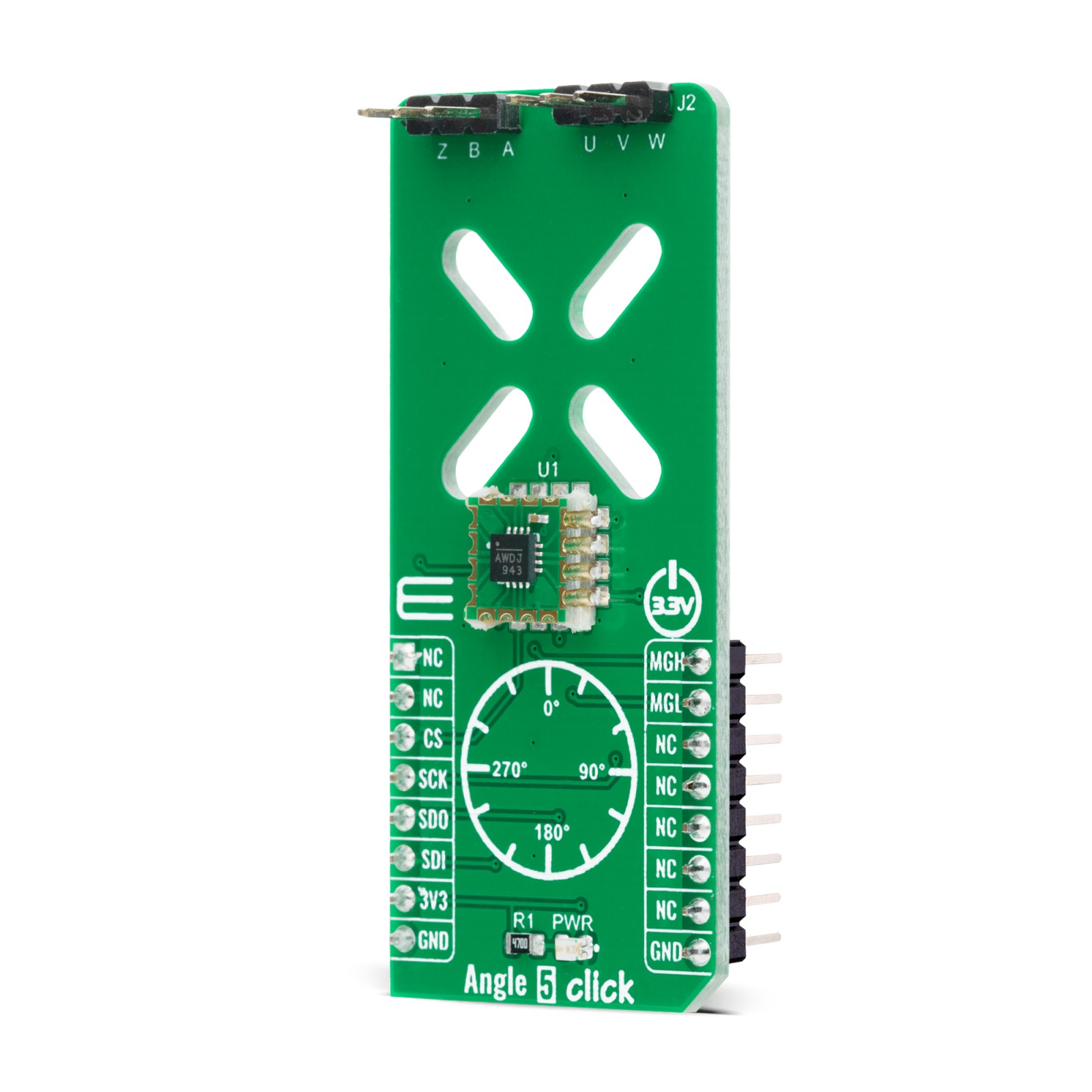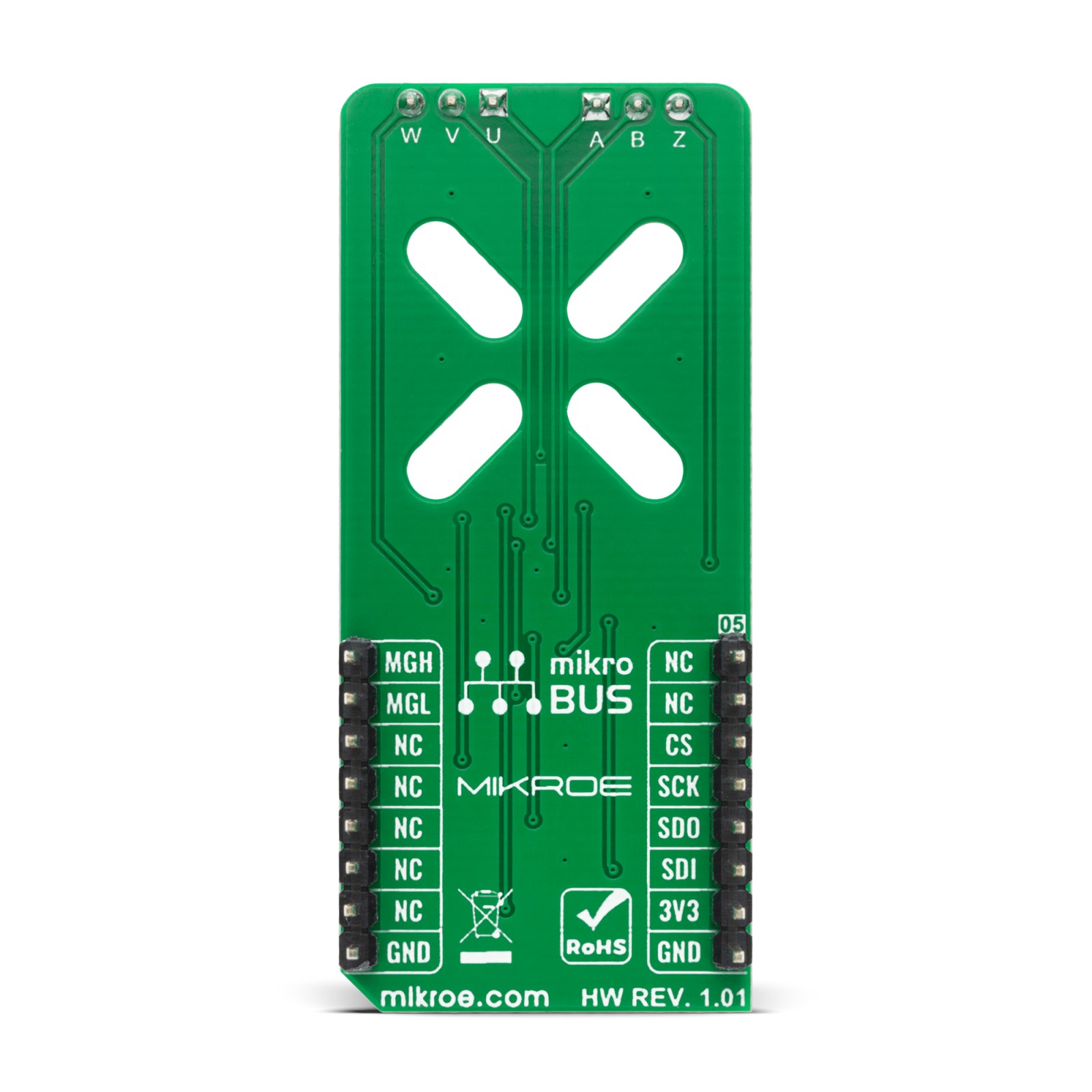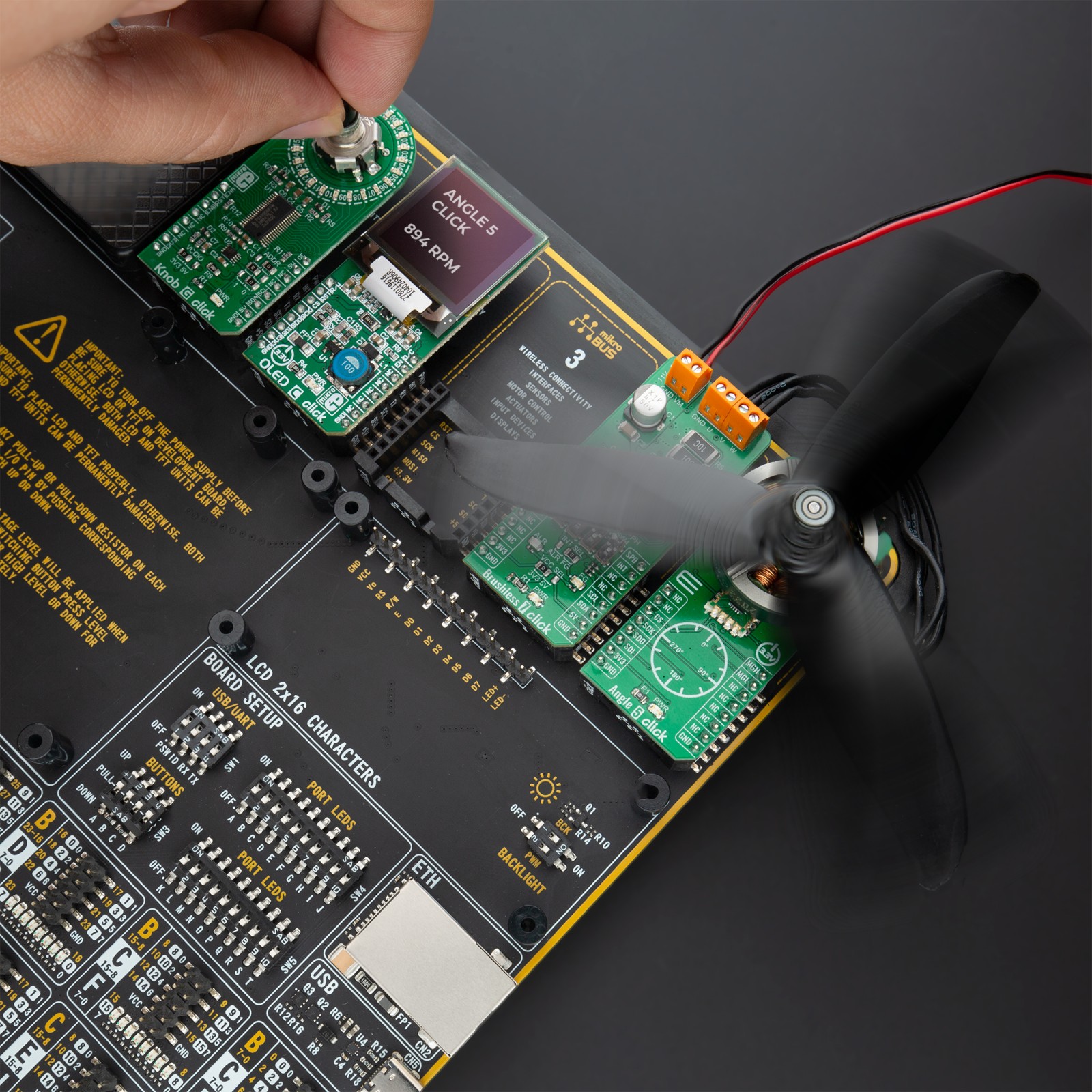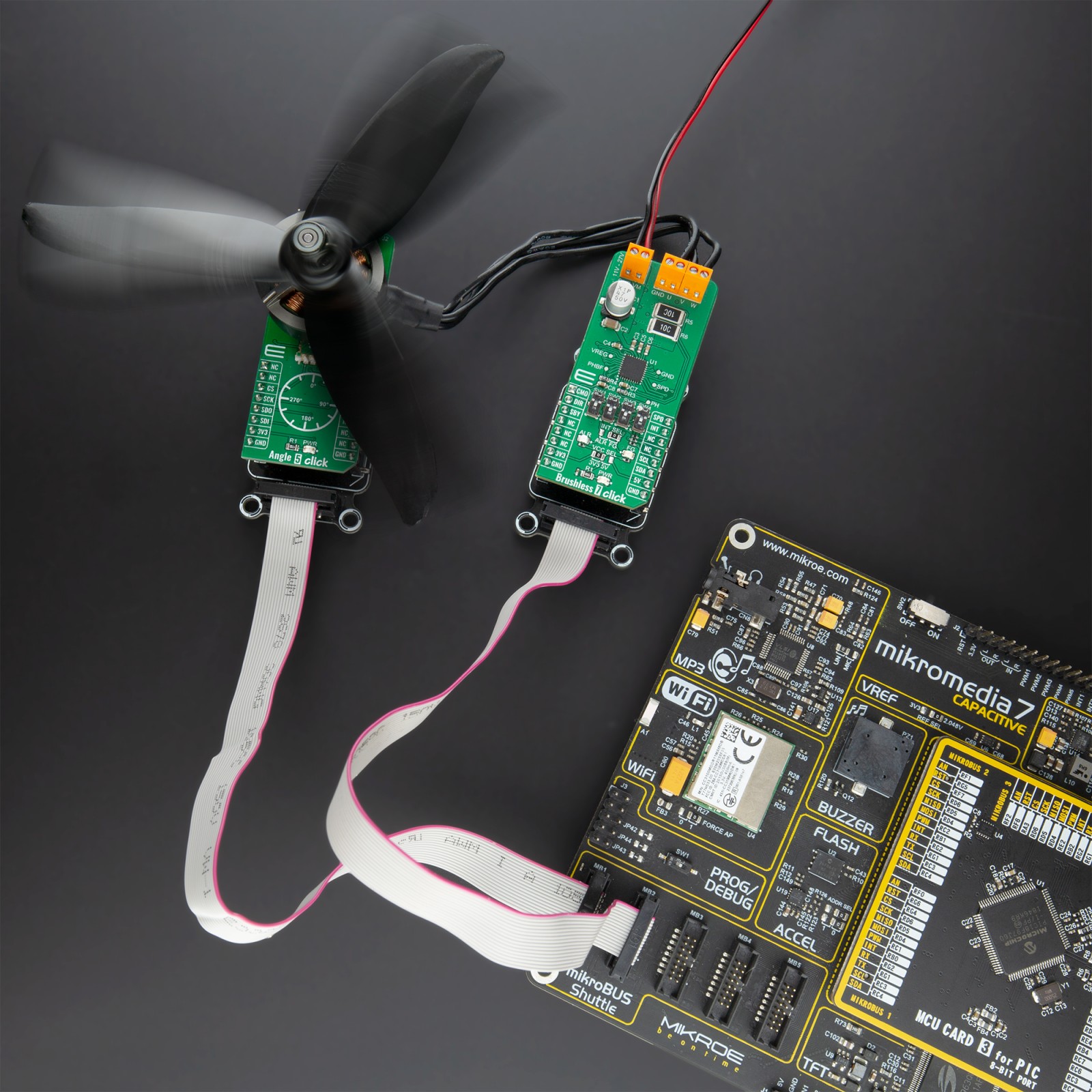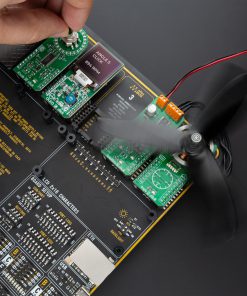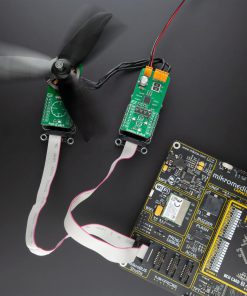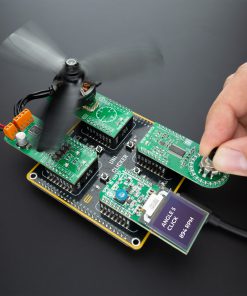Angle 5 Click
R405.00 ex. VAT
Angle 5 Click is a compact add-on board that detects the absolute angular position of a permanent magnet, typically a diametrically magnetized cylinder on a rotating shaft. This board features the MA302, a 12-bit digital contactless angle sensor with ABZ and UVW incremental outputs from Monolithic Power Systems. The MA302 features an ABZ encoder, UVW pole pair emulation, fast data acquisition, and processing which provides accurate angle measurement at speeds from 0 to 60,000 rpm, and a magnetic field strength detection with programmable thresholds. This Click board™ is suitable for various applications such as detecting the absolute rotor position of a brushless motor in real-time, even without a target magnet, by measuring the fringe field of the rotor.
Angle 5 Click is supported by a mikroSDK compliant library, which includes functions that simplify software development. This Click board™ comes as a fully tested product, ready to be used on a system equipped with the mikroBUS™ socket.
Stock: Lead-time applicable.
| 5+ | R384.75 |
| 10+ | R364.50 |
| 15+ | R344.25 |
| 20+ | R331.29 |


